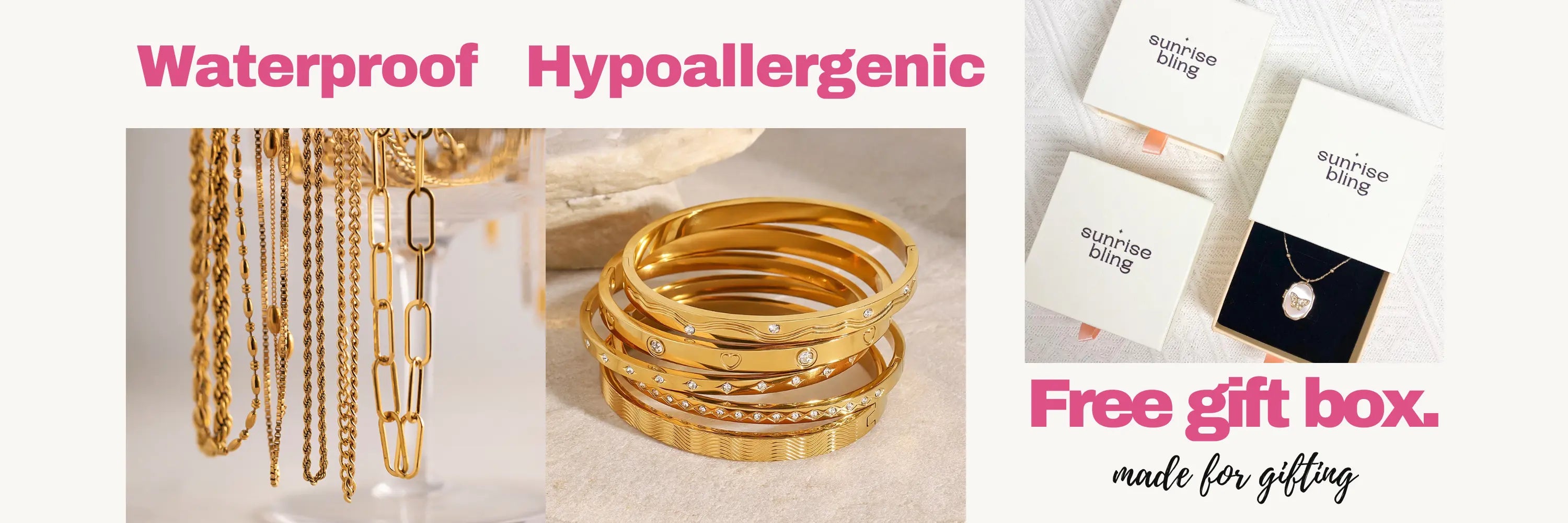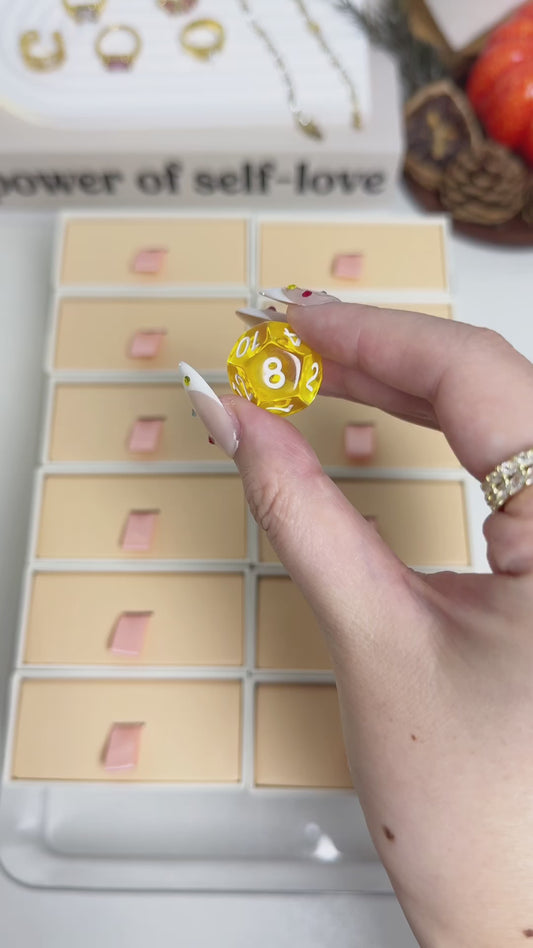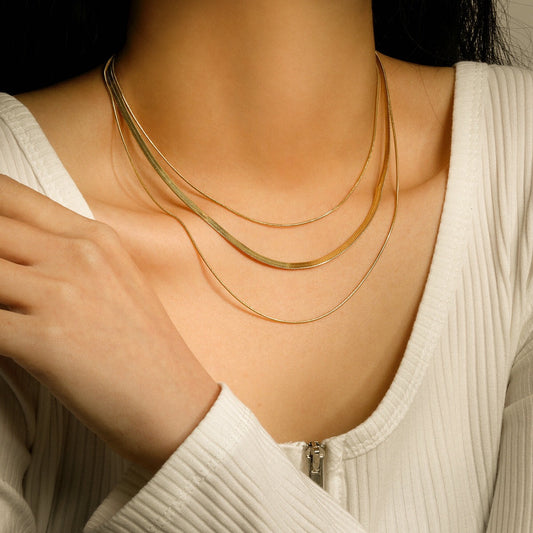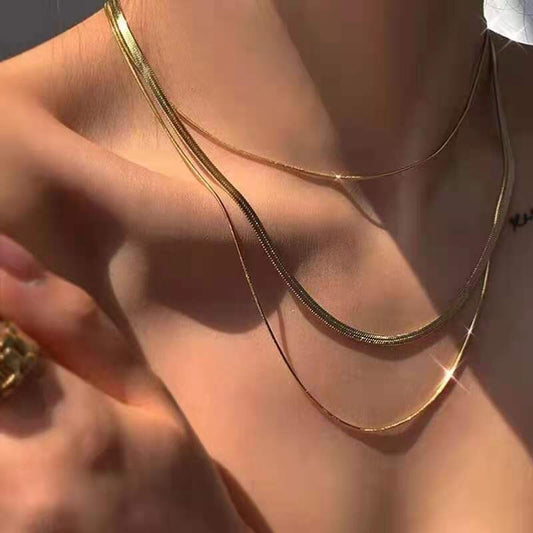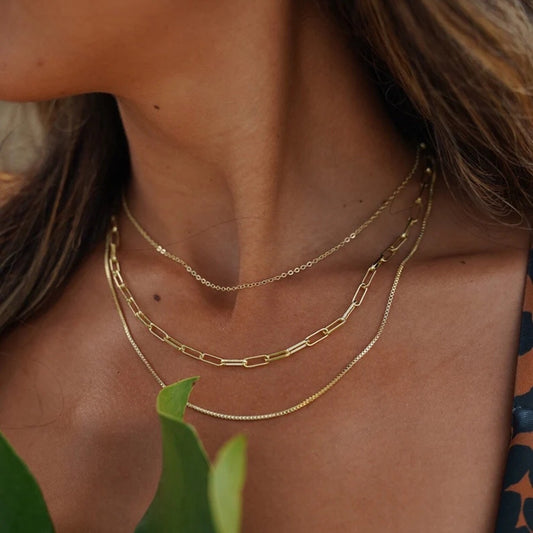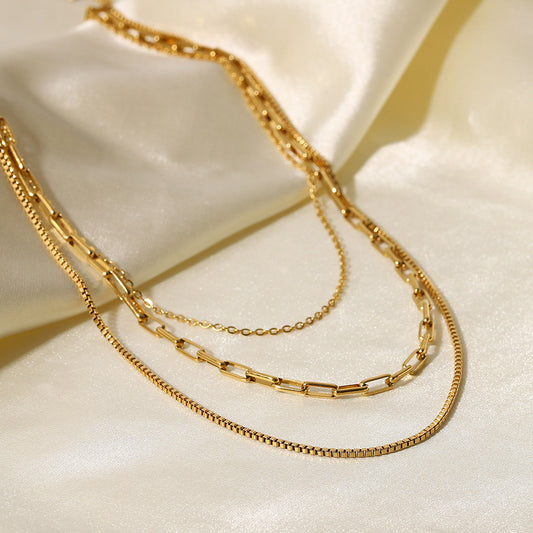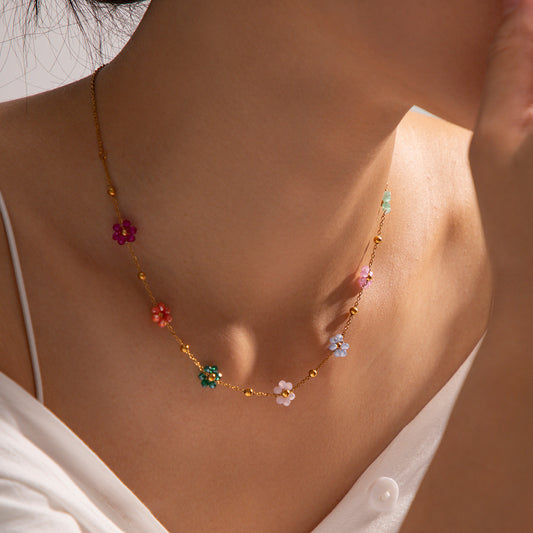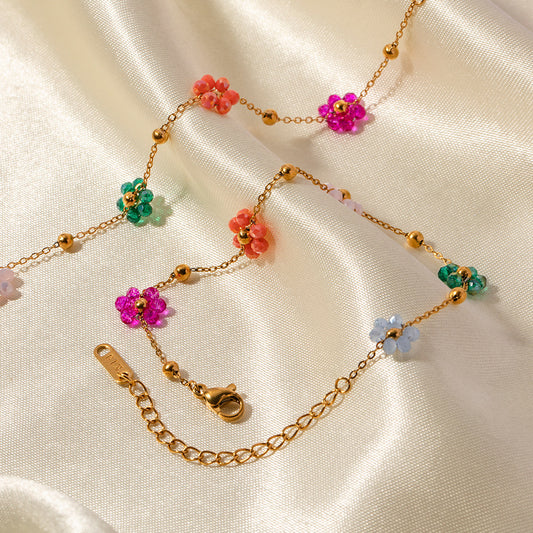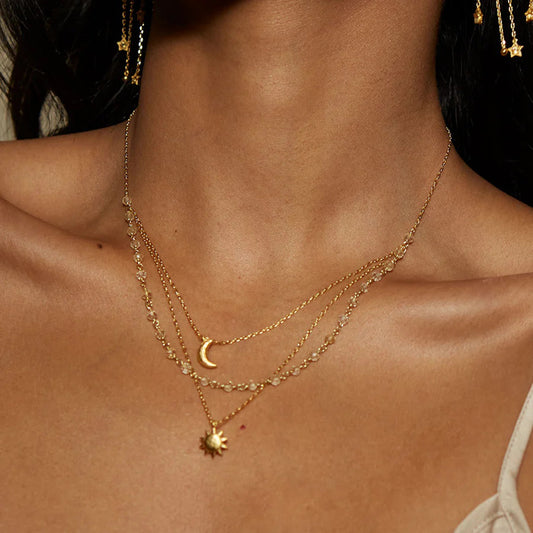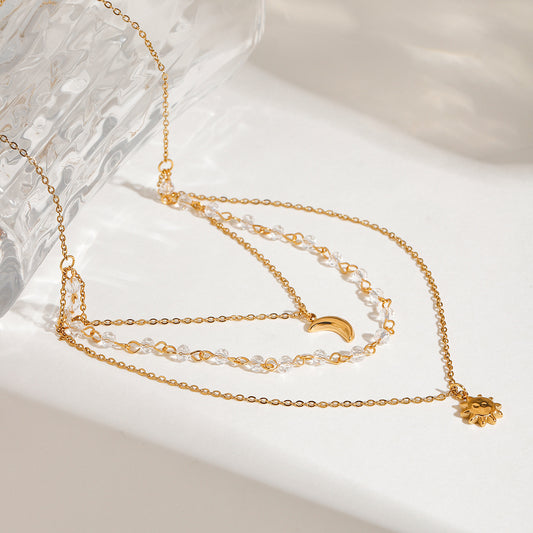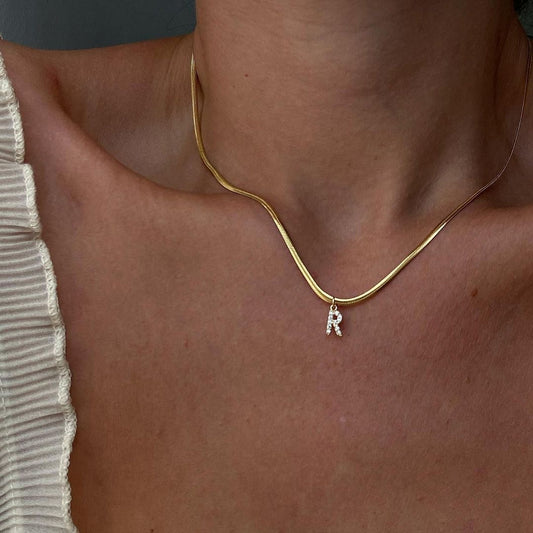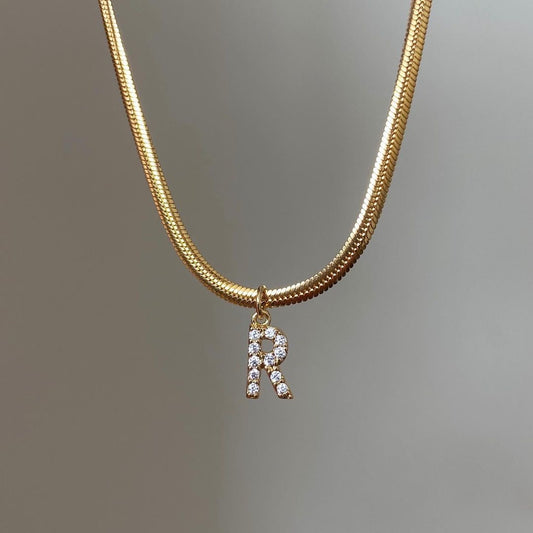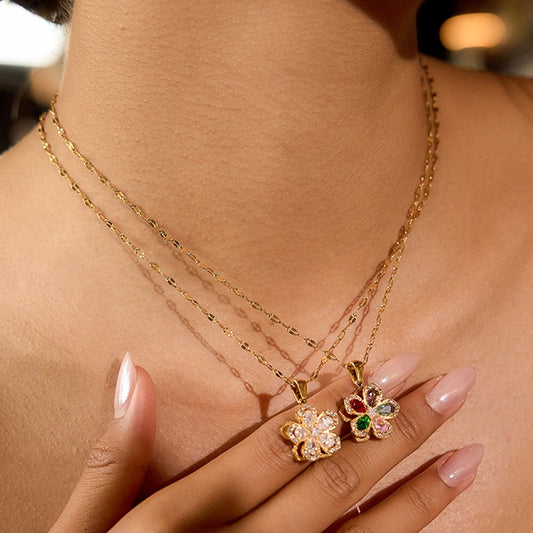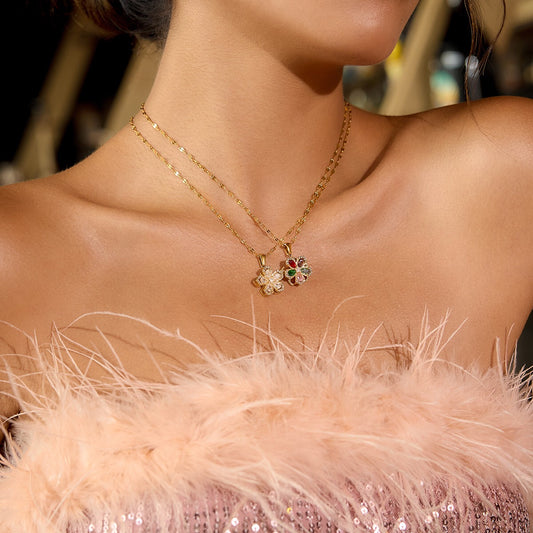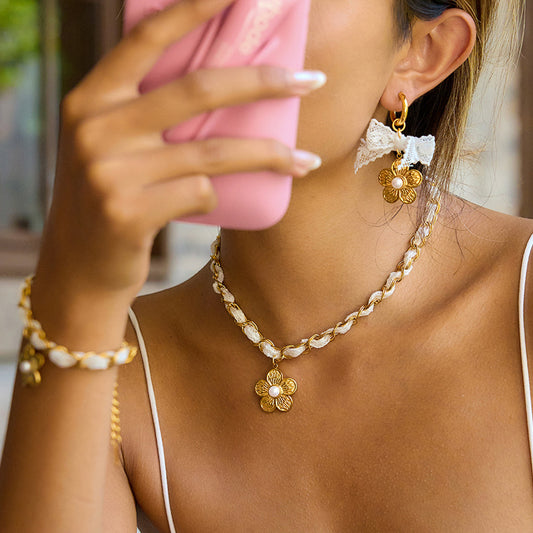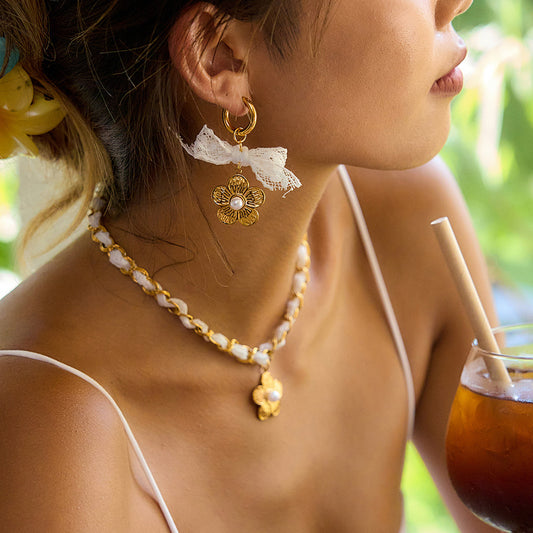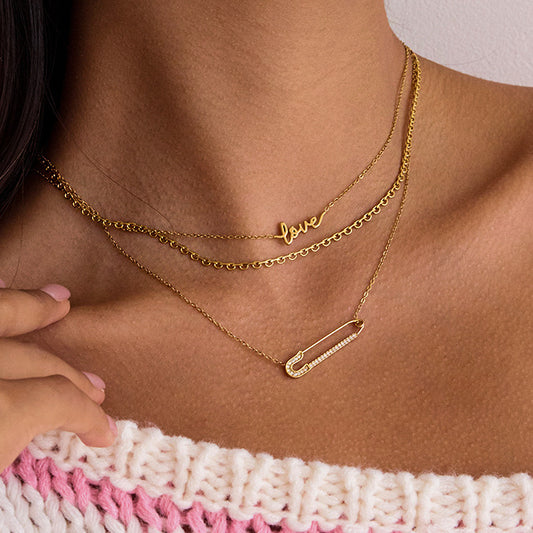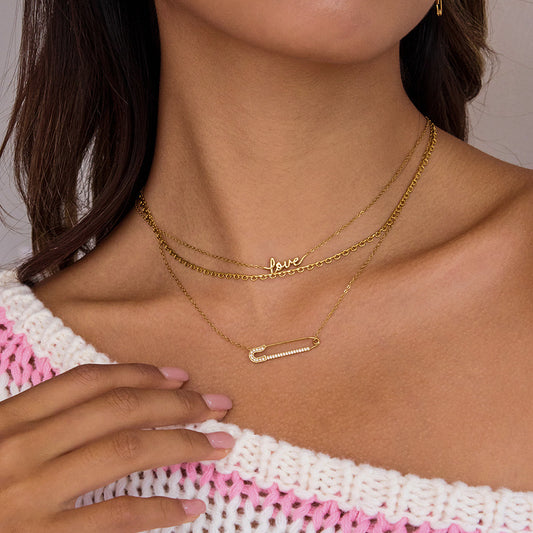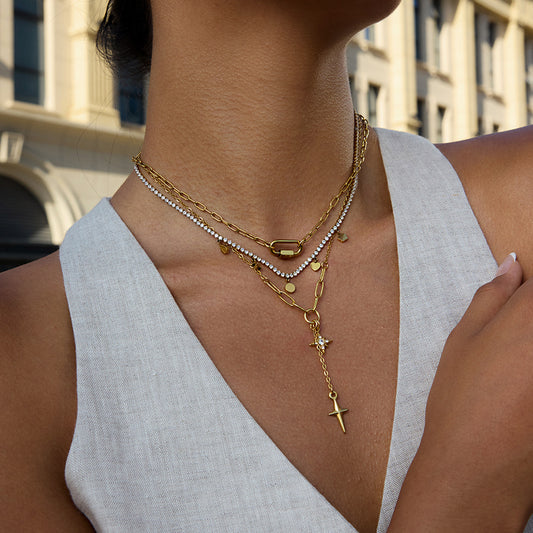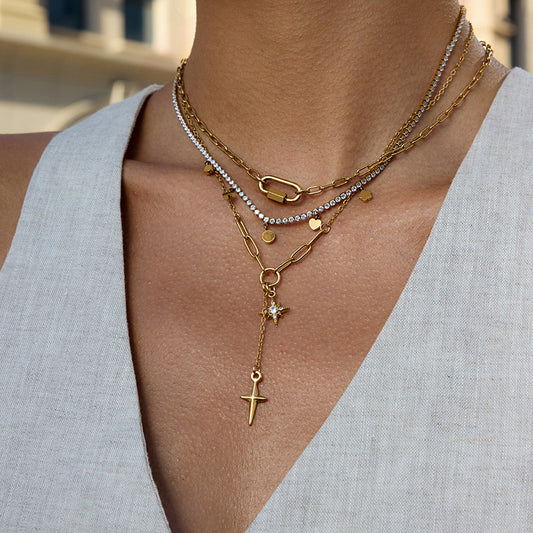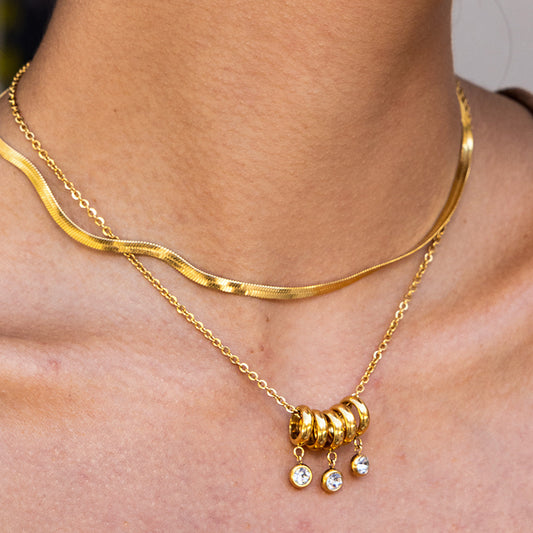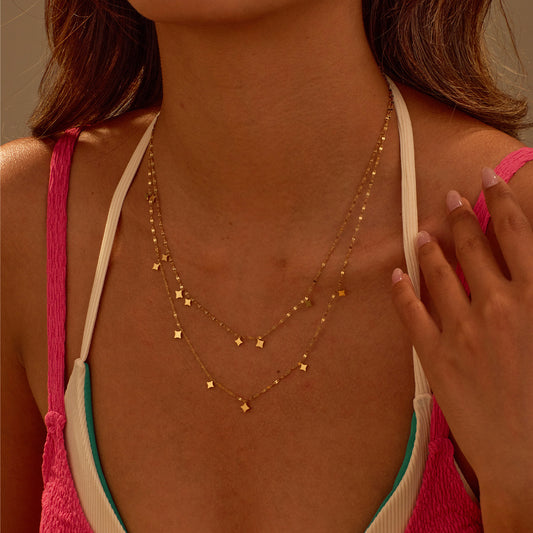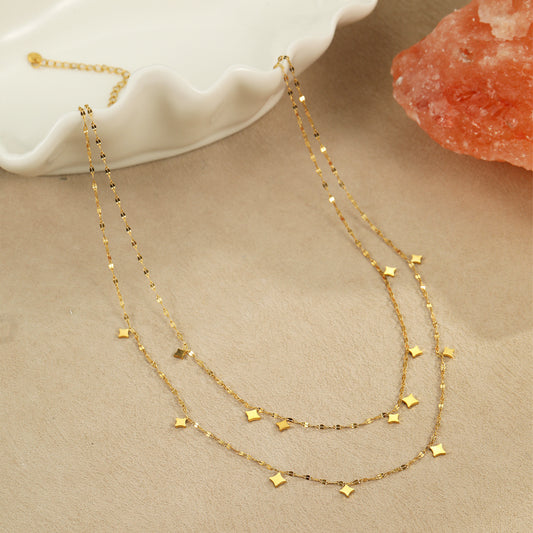Pendant necklaces have consistently held a special place in the hearts of jewelry enthusiasts. According to a recent report by Statista, the global jewelry market, where pendant necklaces are a significant segment, was valued at about 31 billion euros in 2024, and it continues to grow steadily. These necklaces, with their ability to transform an outfit and convey personal style, are more than just accessories; they are expressions of individuality. Whether it's a simple, understated piece or an elaborate, eye-catching design, pendant necklaces have the power to elevate any look from ordinary to extraordinary.

What are Pendant Necklaces?
Definition and Basics
A pendant necklace is a type of jewelry that features a decorative element, known as a pendant, attached to a chain. The pendant can vary widely in size, shape, and material, and it hangs freely from the chain, usually resting at the center of the chest. Chains for pendant necklaces come in different lengths, thicknesses, and styles, such as cable chains, box chains, and curb chains, allowing for a customized look.
Materials and Craftsmanship
Pendants can be crafted from a plethora of materials. Precious metals like gold (in various karatages such as 10k, 14k, 18k), silver, and platinum are popular choices for their durability and luxurious appeal. Semi-precious and precious gemstones, including diamonds, rubies, sapphires, emeralds, and amethysts, are often incorporated into pendants to add color and sparkle. Additionally, materials like stainless steel, pewter, and even glass, wood, or resin are used to create unique and affordable pendant necklaces. The craftsmanship involved can range from simple casting to intricate hand - carving and setting techniques.
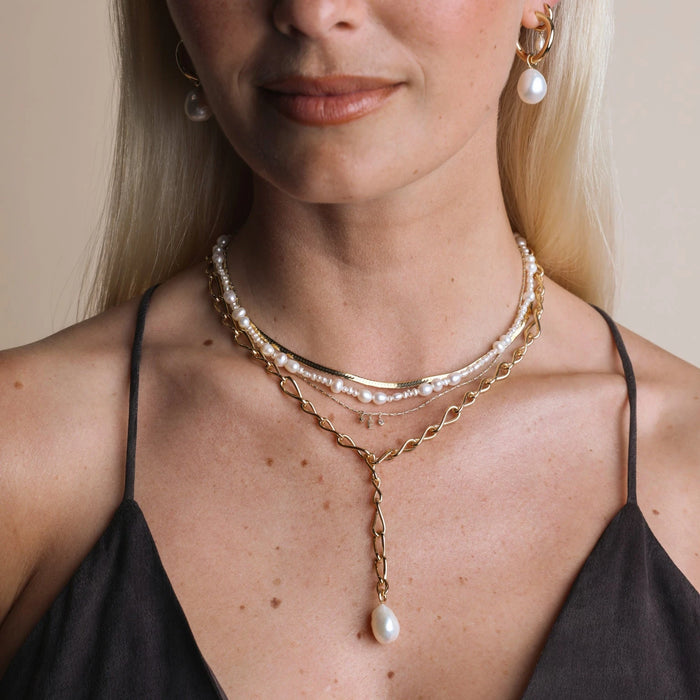
Why are Pendant Necklaces so popular
Personalization and Sentiment
One of the main reasons for the popularity of pendant necklaces is their high level of personalization. They can be customized with initials, birthstones, or symbols that hold special meaning to the wearer. A pendant necklace can commemorate a significant event, represent a loved one, or symbolize a personal achievement, making it a sentimental keepsake.
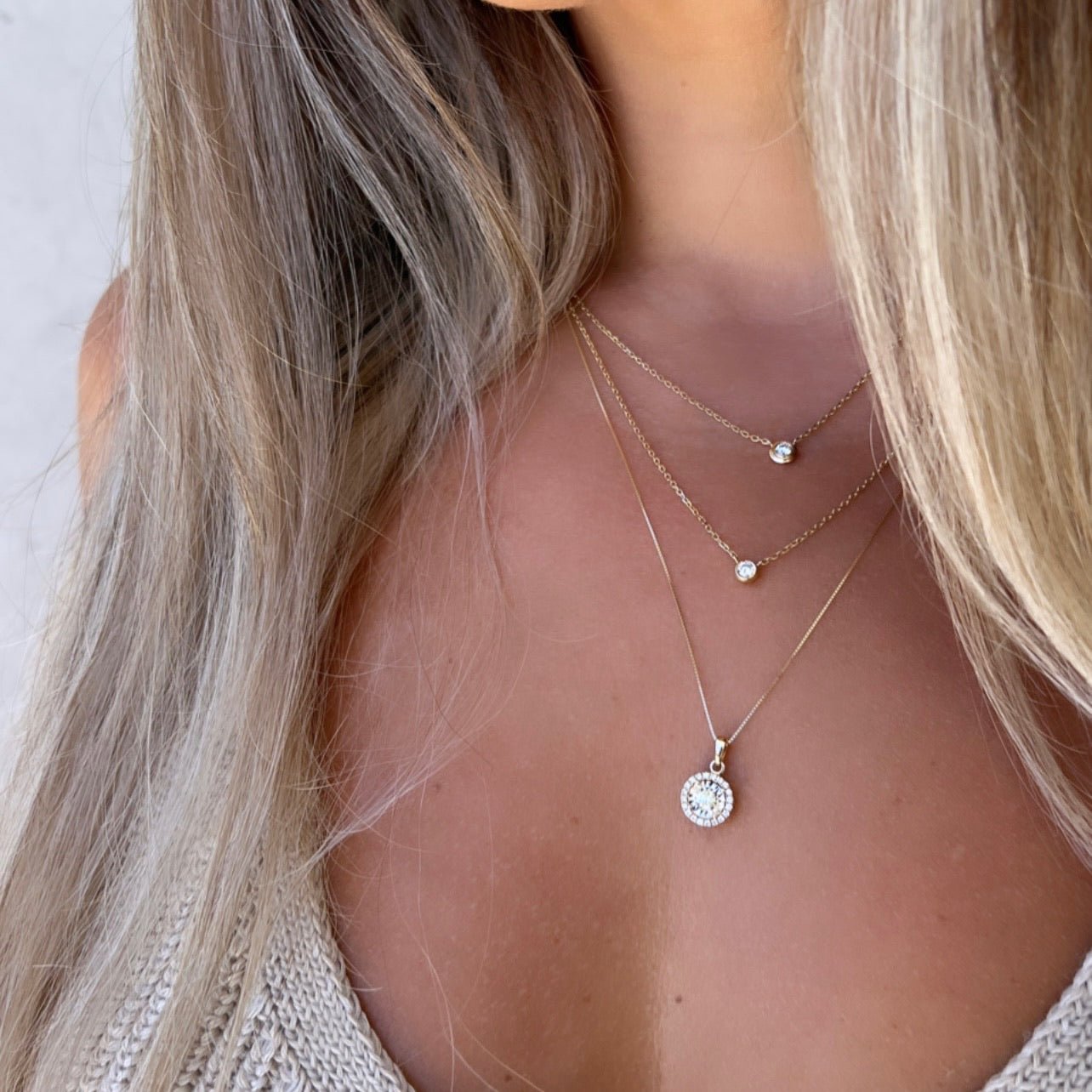
Versatility in Style
Pendant necklaces are incredibly versatile. They can be worn with casual outfits, like a simple t-shirt and jeans, adding a touch of elegance. For formal occasions, a more elaborate pendant necklace with precious gemstones can be the centerpiece of an evening gown. They can also be layered with other necklaces to create a trendy, personalized look, making them suitable for any fashion style.
Fashion - Forward Appeal
Fashion trends often feature pendant necklaces prominently. Designers regularly introduce new and innovative pendant designs, from minimalist geometric shapes to nature-inspired motifs. Celebrities and influencers frequently showcase pendant necklaces, further fueling their popularity and making them a must - have accessory for fashion - conscious individuals.
Popular styles of Pendant Necklaces
Gemstone Pendants
-
Solitaire Gemstone Pendants: These feature a single, large gemstone, such as a diamond solitaire pendant, which exudes elegance and sophistication. The simplicity of the design allows the beauty of the gemstone to shine through.
-
Multi - Gemstone Pendants: Pendants that combine multiple gemstones in a single design, either in a cluster or a pattern. For example, a pendant with a combination of sapphires, rubies, and emeralds can create a vibrant and colorful look.
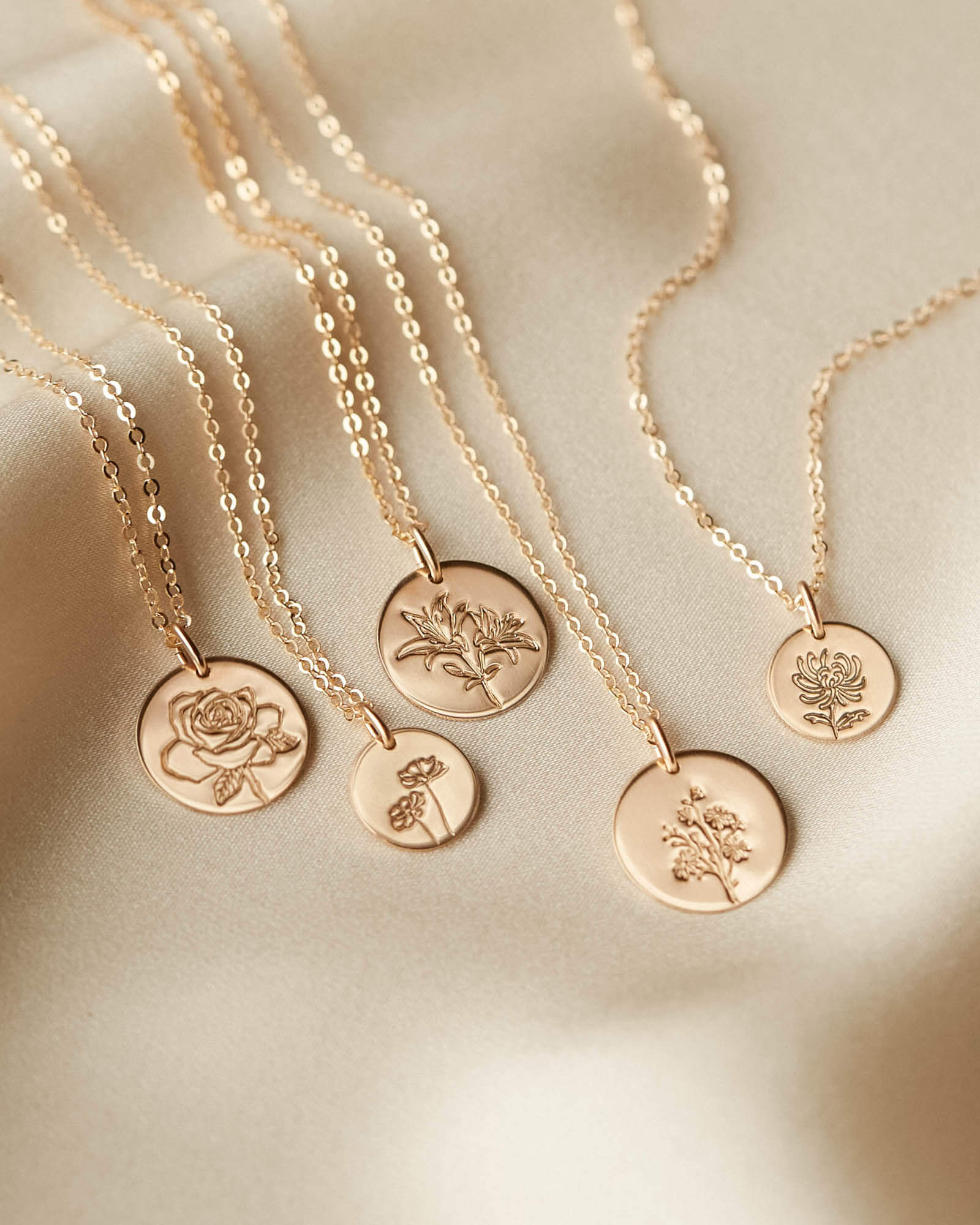
Symbolic Pendants
-
Heart - Shaped Pendants: A classic symbol of love, heart - shaped pendants are a popular choice for romantic gifts. They can be made from various materials and may be adorned with gemstones or intricate detailing.
-
Cross Pendants: Worn as a symbol of faith, cross pendants come in different styles, from simple gold or silver crosses to more elaborate designs with gemstone accents.
-
Animal - Inspired Pendants: Pendants shaped like animals, such as dolphins, butterflies, or elephants, are trendy and can add a playful or whimsical touch to an outfit.

Geometric Pendants
-
Circular and Oval Pendants: These simple geometric shapes can be minimalist or feature intricate patterns or engravings. They offer a modern and sleek look.
-
Square and Triangle Pendants: Geometric pendants with sharp angles can create a bold and contemporary statement. They are often made from metal and may have a polished or matte finish.
How to wear Pendant Necklaces
With Casual Outfits
-
Everyday Wear: For a casual, everyday look, a small pendant necklace with a delicate chain, such as a simple initial pendant or a tiny gemstone, can add a subtle touch of style to a plain t-shirt or blouse.
-
Layering: Layering pendant necklaces of different lengths and styles is a popular trend. You can combine a short choker - style pendant necklace with a longer pendant necklace that has a larger pendant. For example, layer a delicate gold initial pendant choker with a longer silver pendant necklace featuring a nature - inspired charm.
With Formal Attire
-
Evening Gowns: For formal events, a statement pendant necklace can enhance the elegance of an evening gown. A large, gem - encrusted pendant on a long, elegant chain can draw attention to the neckline and add a touch of glamour.
-
Business Attire: In a professional setting, a simple and understated pendant necklace can be a great accessory. A pearl pendant necklace or a small diamond pendant on a fine gold chain can add a touch of sophistication to a business suit or dress.
Pendant Necklaces: perfect gift for your girlfriend
Sentimental Gesture
A pendant necklace makes an excellent gift for your girlfriend as it can carry deep sentimental value. You can choose a pendant that represents a shared memory, like a pendant in the shape of a place you visited together or one with her birthstone. Every time she wears it, she'll be reminded of your love and thoughtfulness.
Customization Options
The ability to customize pendant necklaces allows you to create a unique and one - of - a - kind gift. You can have her name, initials, or a special message engraved on the pendant. Or, you can select a design that reflects her personal style, whether she prefers a classic, minimalist look or a more bold and trendy design.
Long - Lasting Keepsake
Pendant necklaces are not only beautiful but also long - lasting. They can become cherished pieces in her jewelry collection that she can wear for years to come, making them a meaningful and enduring gift.
How to clean Pendant Necklaces
Cleaning Different Materials
-
Precious Metal Pendants: For gold, silver, or platinum pendants, you can use a mild jewelry cleaner specifically formulated for precious metals. Soak the pendant in the cleaner according to the instructions, then use a soft - bristled toothbrush to gently scrub away any dirt or tarnish. Rinse thoroughly with warm water and dry with a soft, lint - free cloth.
-
Gemstone Pendants: When cleaning gemstone pendants, be cautious as some gemstones are more delicate than others. For most gemstones, a solution of warm water and a few drops of mild dish soap can be used. Soak the pendant for a few minutes, then gently clean it with a soft brush. Avoid using harsh chemicals or abrasive materials that could scratch or damage the gemstone.
-
Other Materials: For pendants made from materials like stainless steel, pewter, or resin, a soft cloth dampened with warm, soapy water can be used to wipe away dirt and grime. Dry the pendant completely after cleaning to prevent water spots.
Storage Tips
To keep pendant necklaces in good condition, store them properly. Keep them in a jewelry box lined with soft fabric or in individual jewelry pouches to prevent scratching. Avoid storing them in a humid environment, as this can cause tarnishing of metal pendants and damage to certain gemstones.
What do you call a fixed pendant necklace
Definition and Explanation
A fixed pendant necklace is often referred to as a "solitary pendant necklace" or a "single - pendant necklace." In this type of necklace, the pendant is permanently attached to the chain at a specific point and does not move freely along the length of the chain. The design emphasizes the pendant as the focal point, and it typically hangs at a consistent position on the wearer's chest. This style is popular for its simplicity and elegance, allowing the beauty of the pendant to be showcased without any distractions.
How to make a pendant necklace
Gathering Materials
-
Pendant: Select the pendant you want to use. It could be a store - bought pendant or a handmade one made from materials like clay, wood, or metal.
-
Chain: Choose a chain that suits the style and size of the pendant. Consider the length, thickness, and material of the chain. Common chain materials include gold - filled, silver - filled, stainless steel, and leather cord.
-
Clasp: Select an appropriate clasp, such as a lobster clasp or a spring ring clasp, to secure the necklace.
-
Tools: You'll need jewelry pliers, including round - nose pliers and chain - nose pliers, to open and close jump rings and attach the clasp.
Assembly Steps
-
Attach the Pendant to the Chain: Use a jump ring to connect the pendant to the chain. Open the jump ring using the pliers, thread it through the loop on the pendant and the desired link on the chain, then close the jump ring securely.
-
Add the Clasp: Cut the chain to the desired length if necessary. Then, attach the clasp to one end of the chain using a jump ring, and a jump ring or a simple loop to the other end for closure.
How to make a cord necklace for pendants
Materials Required
-
Cord: You can use materials like waxed cotton cord, leather cord, or suede cord. Choose a thickness that complements the pendant.
-
Pendant: Select a pendant with a large enough hole or loop to accommodate the cord.
-
Beads (Optional): If you want to add decorative elements, you can choose beads that match the style of the pendant and cord.
-
Clasp or Knotting Materials: For closure, you can use a lobster clasp, a magnetic clasp, or simply tie knots at the ends of the cord.
Making the Necklace
-
Thread the Pendant: If using beads, start by threading them onto the cord. Then, thread the cord through the pendant.
-
Adjust the Length: Determine the desired length of the necklace and cut the cord accordingly, leaving some extra length for knotting or attaching the clasp.
-
Attach the Clasp or Knot: If using a clasp, attach it to the ends of the cord using jump rings. If knotting, tie secure knots at the ends of the cord, and you can add additional decorative knots or trim the excess cord for a neat finish.
How to attach a pendant to a necklace
Using Jump Rings
-
Prepare the Jump Ring: Open the jump ring using round - nose pliers. Hold the jump ring with the pliers at the point where the ends meet and gently twist to open it.
-
Thread the Pendant and Chain: Slide the open jump ring through the loop on the pendant and then through the desired link on the chain.
-
Close the Jump Ring: Use the pliers to carefully close the jump ring by reversing the opening process. Make sure the ends of the jump ring are aligned and completely closed to prevent the pendant from falling off.
Other Methods
-
Glue - on Pendants: Some pendants may come with adhesive backs. In this case, clean the surface of the chain where you want to attach the pendant, apply a small amount of jewelry - specific glue, and press the pendant firmly onto the chain. Let the glue dry according to the manufacturer's instructions.
-
Slide - on Pendants: If the pendant has a large enough opening or a slide - on mechanism, simply slide it onto the chain at the desired position.
Frequently asked questions about Pendant Necklaces
How do I choose the right length of a pendant necklace?
The right length depends on your neck size, the style of the pendant, and how you plan to wear it. Choker - style pendant necklaces typically range from 14 - 16 inches and sit close to the neck. Princess length necklaces (17 - 19 inches) are a classic choice that falls just above the collarbone. Matinee length necklaces (20 - 24 inches) are suitable for layering or for a more relaxed look, and opera length necklaces (28 - 36 inches) can be worn doubled up or as a single, long statement piece.
Can I wear multiple pendant necklaces at once?
Yes, layering multiple pendant necklaces is a popular trend. To create a balanced look, vary the lengths, styles, and sizes of the necklaces. Start with a shorter choker - style necklace and add longer necklaces with different pendant designs. Make sure the pendants don't overlap too much and that the overall look is cohesive.
How do I prevent my pendant necklace from tangling?
Store your pendant necklace separately from other jewelry, preferably in a jewelry box with individual compartments or in a jewelry pouch. You can also hang your necklace on a jewelry hook or a small hanger to keep it straight and untangled. When wearing multiple necklaces, avoid excessive movement that could cause them to twist together.
Conclusion: Adorn Yourself with the Timeless Allure of Pendant Necklaces
In conclusion, pendant necklaces are a timeless and versatile accessory that can truly elevate your look. Whether you're looking for a meaningful gift, a way to express your personal style, or a stunning addition to your jewelry collection, pendant necklaces offer endless possibilities. Don't miss out on the opportunity to own a piece of jewelry that combines beauty, sentiment, and style. Explore our wide selection of pendant necklaces today and find the perfect charm to enhance your look!


